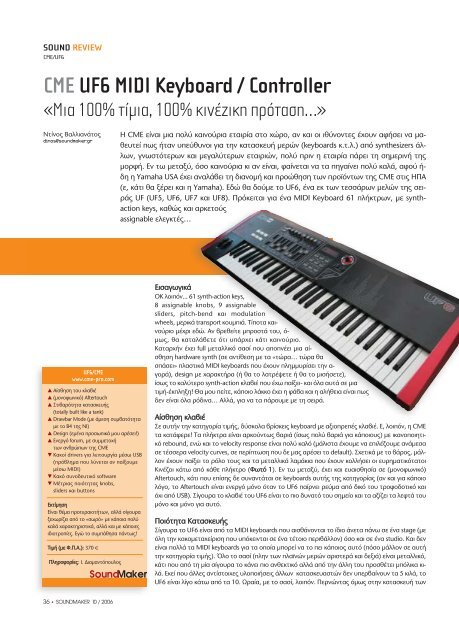Cme Uf Series Midi Keyboard Driver For Mac Os X

Shablon dlya gramoti word. The bright, jangling tones of an acoustic guitar fit in with almost any instrument, sound beautiful on their own and are a perfect accompaniment for the human voice. But where did it come from, and how do you know which is right for you? Musician's Friend has a wide assortment from the biggest acoustic guitar makers around as well as smaller, more niche brands. We've got everything from affordable entry-level starter packs for younger players to highly detailed one-off guitars for gigging professionals and collectors.
Mar 1, 2008 - The UF60 is a MIDI keyboard controller with wireless MIDI and expansion bay. CME made its mark on the keyboard world with the introduction of the original UF series. Ultimate Sound Bank PlugSound Pro, and Apple Logic Pro 7. Running CME's UFBrain software; I was unable to try this on my Mac. Sep 04, 2014 I have downloaded the last mac intel driver for UF8 series. But when I go into logic, it wont find my keyboard. Any advice would be great. Just connect a MIDI cable from the CME MIDI out to the Edirol MIDI in. Eric Bradley Cardenas. CME UF8 not connecting to Mac OS X Lion? Sat Oct 26, 2013 2:07 am.
A Brief History of the Acoustic Guitar You may be surprised to know the acoustic guitar's roots go back to Ancient Egyptian. A lute was a hollow-bodied wood instrument with multiple strings attached to a soundboard via a thin piece of wood (the bridge). The strings were stretched in a parallel fashion across a soundhole, and wound taut to a peg or post (tuners) atop the neck.
Kya dil mein hai serial last episode. The tension of each string was adjusted to create a pattern of frequencies familiar to those who played it. The lute had a teardrop-shaped soundboard, bowl-shaped body and a sharp bend in the neck. A lutist, much like today's guitarist, strummed or plucked the strings with their fingers or a plectrum (what we call a pick). The sound produced was created by the air being moved around the string vibrations, the vibrations coming off the soundboard, and the air resonating back out from the body chamber through a soundhole. Fingers on the 'neck' hand change the pitch of a string by pressing it firmly against specific spots along the neck top (fingerboard).

Though the lute was used through the Baroque era, the inspiration for the name 'guitar' showed up back in 13th century Western Europe with the 'gittern.' Similar in design to the lute, its body was carved out of a single piece of wood and had a smooth or straight neck joint. In the 15th century, Spain introduced the vihuela, a flat-backed, peanut-shaped design with a less pronounced neck bend and pairs of strings tuned in unison. Roughly 350 years later, Spanish-born guitar maker Antonio Torres Jurado created a larger body design and introduced fan bracing for internal reinforcement. This made what we now call the nylon-string, Spanish or classical guitar, louder with better projection and a cleaner tone. In 1916, C.F. Martin & Company developed the square-shoulder dreadnought acoustic guitar.